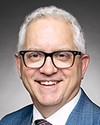Thank you, Madam Chair.
Kwe Kwe. Hello.
I'm so pleased to be with you here on the unsurrendered, unceded territory of the Anishinabe Algonquin people.
Thank you for the invitation. I have with me, as you have noted, a host of officials with deep expertise in the areas of water and education.
I'm thrilled to be here to discuss the two reports by the Auditor General, one on access to clean drinking water in first nations communities and the other on the socio-economic gaps that indigenous people continue to experience. I appreciate the opportunity to have a practical conversation about both of these critical areas of focus.
To do that, I think we have to go back to where we were in 2015. To put it bluntly, the situation was dire. In November 2015, there were 105 long-term drinking water advisories in over 67 first nations communities. Since we took office, first nations have lifted 143 long-term advisories. That sounds weird, doesn't it? That's more than there were in 2015. In fact, as you know, these numbers are not static. Indeed, this reflects the ongoing work of preventing short-term drinking water advisories from becoming long-term as well. There are no more long-term drinking water advisories in Atlantic Canada, Quebec, Alberta or B.C. Today, 96% of all first nations peoples have access to clean water.
As of today, there are 28 long-term drinking water advisories that affect 26 first nations communities, but thanks to first nations leadership and persistence, including their ongoing collaboration with the department, I'm happy to say that there is a plan and a project team is in place to address them all, which is a far cry from the approach taken by the previous government. Out of the 28 remaining, 17 infrastructure projects are complete, and construction is moving on nine more. These represent over 90% of the remaining projects, which is very good news. We're closer than ever to fixing a situation that should have never been in place to begin with.
These figures are important. However, they don't convey the complex obstacles that prevent communities from lifting advisories. Every community faces unique challenges that require unique solutions.
First nations communities need to be in the driver's seat to make the decisions that are best for their needs. For example, two communities in southwestern Ontario, Chippewas of the Thames and Oneida Nation of the Thames, had the option to connect to the provincial water system or to pursue an independent water source. The Oneida Nation of the Thames chose to connect to the existing provincial system because their existing water source wouldn't be able to meet their long-term needs, and construction has started with a target end date of 2025.
The Chippewas of the Thames, which I visited a few months ago, opted for an independent system to ensure that they had full oversight over every component, from treatment to waste-water management. They're currently exploring a potential groundwater source. It will take a full year of monitoring to make sure it can support the community's needs in all seasons.
In both cases, the community determined the best path toward long-term sustainable solutions that work for their needs and goals, and this is how it should be. Time and again, the evidence shows that indigenous-led programs and policies lead to better outcomes.
On education, for generations indigenous peoples have been forced to conform to western colonial metrics of success that don't reflect their own values. The Government of Canada indeed used education as a spearhead to suppress and control, with the ultimate goal of “killing the Indian in the child”. It's imperative that we do this hard work to unravel and address the cumulative impacts of these colonial policies.
When we invest in education, we invest in the future. Following the lead of indigenous partners, we're working hard to close gaps in education so that every child has a safe and healthy learning environment, from the school facility all the way to the curriculum. Schools usually end up becoming multi-purpose community facilities for events and cultural gatherings as well. When I visited Kasabonika in October, the celebrations for their connection to the Ontario power grid happened in their school gym.
Since 2016, we've funded projects to build and renovate over 200 schools that serve 35,000 students from coast to coast to coast. Right now, 24 new schools are under construction, with 50 more under renovation. I can tell you that when I visit communities, the new schools and the renovated schools are a great source of pride for community leaders and for families because they are reminders of the investment in youth and the immense potential they represent.
Students learn better when they see themselves in their learning. They're more likely to stay engaged and to continue their education. To meet the specific needs of the first nations students and communities, we're updating the education policies and funding approaches in partnership with the first nations.
For example, we were the first government in the history of this country to implement funding parity so that kids would get the same resources on and off reserve. We've also signed agreements with communities to put leadership of education systems where it should always have been—with first nations. This work has led to sustainable, predictable education funding for first nations communities, the required resources to develop and maintain culturally appropriate education systems, and a sense of being in control over the education of their students.
These transformative policies have required us to rethink how we measure success. Indigenous Services Canada introduced new metrics this year that reflect calls by first nations to move away from western expectations of on-time graduation and toward first nations-defined student outcomes.
There's still a long way to go to address the inequalities facing first nations communities.
After a decade of Conservative cuts and after centuries of paternalism and neglect, we're closer than ever to a future of self-determination for indigenous peoples. I hope that goal is something we can all agree on.
Thank you. I'm happy to take your questions now.




